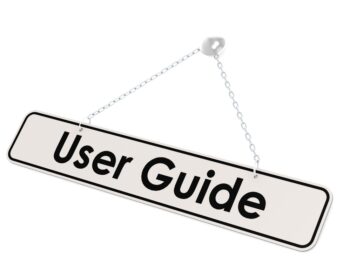
Settlement Authority is the Control of Financial Decisions
In reality, settlement authority is the control of financial decision-making allowed to a lower level in the claims management hierarchy by a higher level in the hierarchy.
This post is one in a 3-part series:
Settlement authority can be granted for all claims as a group and/or settlement authority can be extended for a single claim.
- For example, the workers’ comp adjuster with a $10,000 settlement authority is allowed to make a decision as to the dollar amount to settle any claim an employee is willing to settle, as long as the cost to settle the claim does not exceed $10,000.
- If the adjuster has a claim with a settlement value of $20,000, the adjuster reviews the claim with the workers’ comp claims supervisor. If the supervisor agrees on the value of the claim, the supervisor will grant settlement authority of $20,000 on that single claim.
It should be noted settlement authority is the maximum amount an adjuster is allowed to spend to resolve a workers’ comp claim. It is always understood, whenever possible, claims settle for the least amount.
Settlement authority ultimately lies with the entity taking the risk, up to their level of retention. This could be the insured, or insurance company. If the workers’ compensation insurance company has a reinsurer, the ultimate settlement authority rests with the reinsurer on claims over and above the primary carrier’s retention level.
Click Link to Access Free PDF Download
“8 ‘Think Outside the Box’ Tactics to Settle Workers’ Comp Claims”
Multiple Levels of Settlement Authority Exist
Multiple levels of settlement authority exist within every claim management hierarchy. The purpose of the multiple layers is to maintain control over the cost of claims. It is based on the assumption that the higher the person is within the corporate hierarchy, the better the decision-making skills.
The granting of settlement authority within an insured/insurance company and granting settlement authority to a third-party administrator (TPA) differs in some facets. Within an insured/insurance company, settlement authority level generally follows the corporate hierarchy level. Within a TPA, the settlement authority process depends upon the relationship between the insurer (or self-insured) and the TPA.
How Settlement Authority Might Work Within an Insurance Company
- The vice president of claims for an insurance company has settlement authority granted by the insurance company’s president to settle claims for any amount up to the maximum level of insurance coverage.
- The vice president of claims grants the regional managers for the company settlement authority up to $250,000, with any claim greater than $250,000 being approved by the vice president of claims.
- The regional managers grant the claim managers of each claims office settlement authority up to $100,000, with any claim greater than $100,000 being approved by the regional manager.
- The claim manager grants settlement authority to the claim supervisor to settle any claim up to $25,000, with any claim greater than $25,000 being by the claim manager.
- The claim supervisor grants the workers’ comp adjuster settlement authority up to $10,000, with any claim greater than $10,000 being approved by the claim supervisor.
(Note: These dollar levels are used for illustration purposes only. The settlement authority dollar levels will be determined by each insurance company as they see fit).
Settlement Authority and the TPA
- Before settlement authority is granted to a TPA, the insured/insurance company first establishes a comfort level with the financial decision-making ability of the TPA. If the insured/insurance company has worked with the TPA previously and has a good feel for the claims decision making of the TPA, the insurance company is then willing to grant a higher settlement authority amount to the TPA than it would with a TPA it has not done business with before.
- When an insured/insurance company determines the level of settlement authority to grant to a TPA, it basically determines how much control over its claims that it is willing to relinquish to the TPA. The lower the settlement authority granted to the TPA, the higher the level of control over settlements the insurance company will have. If the insured/insurance company does not trust the TPA’s financial decision-making, they can exercise more control by lowering the settlement authority amount. Of course, with the higher control level comes a higher level of involvement in the claims by the insured/insurance company.
- With a new TPA, the insured/insurance company might extend a $50,000 settlement authority to the TPA. The TPA then is free to handle and resolve any claim reporting to them evaluated by the TPA as worth $50,000 or less. When a workers’ comp claim exceeds $50,000, the insured/insurance company requires regular reporting from the TPA. The insurance company reviews the details of the claim. If satisfied with the way the claim is being handled, it grants the TPA settlement authority up to a specific dollar for the single claim in question.
- After being granted settlement authority by the insured/insurance company, the TPA handles the claim the same way the insurance company handles a claim. The TPA grants the claim office manager $50,000 settlement authority, the supervisor would be granted $25,000 settlement authority, and the adjuster $10,000 settlement authority.
- Settlement authority can be extended from the insured/insurance company or TPA to a representative, the defense attorney for claim resolution. In the jurisdictions mandating mediation or arbitration of workers’ comp cases before they can be adjudicated by the workers’ comp board or the courts, it is often required defense counsel be extended settlement authority. The workers’ comp adjuster and the defense attorney discuss what they think the workers’ comp claim is worth. The adjuster then requests the settlement authority with the request going upward through the claim management hierarchy until it reaches the level of approval and authority is granted for settlement of the individual claim. Then the settlement authority is granted to the defense attorney.
Settlement Authority Allows for Control
Settlement authority levels allow the management of an insured/insurance company to retain some control over how their money is spent. The level of control drops as the dollar value of claims drops. This provides the insured/insurance company with significant control over the large claims likely to have a bigger impact on the company’s financial soundness.

Contact: RShafer@ReduceYourWorkersComp.com.
Workers’ Comp Roundup Blog: https://blog.reduceyourworkerscomp.com/
©2021 Amaxx LLC. All rights reserved under International Copyright Law.
Do not use this information without independent verification. All state laws vary. You should consult with your insurance broker, attorney, or qualified professional.














